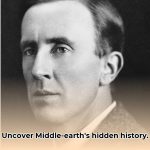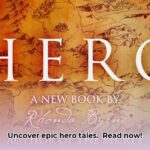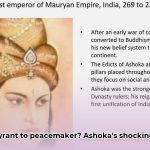Ever wonder why so many stories feel familiar, even if they’re set in wildly different worlds? It’s often because they subtly echo a pattern, a kind of underlying structure for crafting narratives that resonate. That structure is Joseph Campbell’s Hero’s Journey. But don’t think of it as a strict set of rules; it’s more like a flexible framework filled with powerful storytelling tools. We’ll explore the core of the Hero’s Journey, examining its classic forms and more recent adaptations. We’ll also address common criticisms: Is it overused? Does it favor certain types of stories at the expense of others? Most importantly, we’ll demonstrate how to creatively apply it to craft unique, relevant stories, avoiding predictable plots. Whether you’re an experienced writer or just beginning, prepare to unlock the enduring power of this ancient storytelling technique. For further exploration of archetypes, check out this article on [alchemy and magic](https://www.lolaapp.com/alchemy-and-magic-the-thin-line-between-ancient-science-and-fantasy).
The Hero’s Journey: Deconstructing the Universal Monomyth in Fantasy Epics
Why do countless stories feel strangely similar, even when set in wildly imaginative worlds? The answer often lies in an underlying narrative structure: the Hero’s Journey. But this framework isn’t about imitation; it’s about understanding the bones of a powerful structure that has influenced storytelling for generations. Let’s explore the concepts of the universal monomyth and its expression in fantasy epics.
Campbell’s Monomyth: A Roadmap for Epic Tales and Storytelling Archetypes
Joseph Campbell, a renowned mythologist, identified a recurring pattern in myths and stories from around the world, calling it the “monomyth,” now widely known as the Hero’s Journey. Think of it as a versatile roadmap, not a rigid checklist, for creating emotionally compelling narratives. Campbell divided it into three primary phases: departure, initiation, and return.
1. The Departure: The Call to Adventure
This is where our hero, typically living an ordinary life, receives a call. Something disrupts their status quo, presenting a problem or invitation that compels them to step beyond their comfort zone. Consider Frodo Baggins’ tranquil life in the Shire, shattered by the arrival of the One Ring in The Lord of the Rings, or Luke Skywalker’s mundane existence on Tatooine, disrupted by Obi-Wan Kenobi and R2-D2 in Star Wars. This initial disruption is the “call to adventure,” the catalyst that kicks everything into motion. The hero might initially resist, but the call persists, growing stronger until it can no longer be ignored. This stage is crucial for establishing strong narrative hooks and clear character motivation.
2. Initiation: Trials, Transformations, and Mentors
Here’s where the story truly begins. Once the hero embraces the adventure, they venture into a new, often bewildering and challenging world. Think of Frodo’s dangerous journey to Mordor, filled with perilous landscapes and menacing creatures, or Harry Potter’s time at Hogwarts, a realm of magic, mystery, and hidden dangers. This phase is filled with trials designed to test the hero’s resolve, forcing them to mature, and introducing them to mentors who offer guidance and support. These trials aren’t just physical; they frequently challenge the hero’s beliefs, morals, and understanding of themselves and the world. They must face their fears, discover strengths they never knew they had, and make difficult choices. The initiation phase is essential for deep character development and exciting plot progression.
3. The Return: Triumph, Transformation, and Lasting Change
After overcoming obstacles and enduring setbacks, the hero finally achieves their goal (or something even greater). They return to their ordinary world, forever changed. Frodo, scarred yet victorious, returns to a Shire irrevocably altered by the destruction of the Ring. Luke Skywalker, now a skilled Jedi Knight, returns ready to confront the Empire. The return isn’t simply about arriving home; it’s about integrating the lessons learned, the wisdom gained, and the transformations endured. The impact of the hero’s journey extends beyond the individual, influencing those around them and their world, often inspiring positive change and offering new perspectives. The Hero’s Journey concludes with the return, providing a sense of narrative closure and promoting a lasting cultural legacy.
A Critical Look: Is the Hero’s Journey Universal? Addressing cultural biases and gender representation
While the Hero’s Journey offers a valuable framework for storytelling structure, it’s not without its critics. Some find it too simplistic, ignoring the diversity of storytelling traditions worldwide. Many cultures possess narratives that don’t neatly fit this structure. Others express concern about potential Western bias, given Campbell’s reliance on Western mythology. It’s important to view the Hero’s Journey as a helpful tool, not an inflexible rule. The question lingers: Is it truly universal, or does it reflect specific cultural values?
Additionally, some critics highlight the historical tendency to portray the “hero” as a male character, potentially marginalizing female contributions. This raises questions about the model’s potential to perpetuate gender imbalances. Ongoing research seeks to refine our understanding of narrative structures and their cultural variations.
Modern Twists and Turns: Subverting Expectations in contemporary literature and film adaptations.
Contemporary authors and filmmakers embrace the Hero’s Journey’s adaptability, using it as a foundation for creative exploration rather than merely replicating it. We see reluctant heroes, like Katniss Everdeen in The Hunger Games, thrust into heroic roles against their will. We also see anti-heroes, flawed characters who nonetheless strive for good. These deviations demonstrate that the Hero’s Journey is a flexible framework open to interpretation, not a rigid formula. Do these modern twists enhance storytelling, or do they dilute the archetype’s original power?
Crafting Your Own Epic: Using the Hero’s Journey Wisely by improving character arcs and narrative complexity.
How can you, as a writer, use the Hero’s Journey effectively without creating stale or predictable stories?
-
Deep Dive, Don’t Just Copy: Become thoroughly familiar with the core elements, but don’t treat it as a strict checklist. Use it to analyze stories and as a springboard for creativity.
-
Focus on Character Depth: Create protagonists with compelling motivations, relatable flaws, and internal struggles. Make them individuals readers can connect with, even if imperfect.
-
Embrace the Unexpected: Experiment with the structure. Subvert expectations by altering stages or skipping them entirely. The goal isn’t fidelity, but a unique narrative.
-
Broaden Your Perspectives: Move beyond traditional archetypes. Craft characters from diverse backgrounds, with different abilities, and unique perspectives. Explore narratives that transcend restrictive gender roles and cultural stereotypes.
-
Let Originality Shine: Use the Hero’s Journey as inspiration, not a confinement. Let it spark creativity, leading to a compelling story that is uniquely your own.
The Hero’s Journey: Weighing the Pros and Cons of using the storytelling technique for modern narratives.
| Advantages | Disadvantages |
|---|---|
| Provides a strong underlying narrative structure | Can lead to formulaic and predictable storytelling |
| Supports rich and meaningful character arcs | May not fully capture all storytelling styles |
| Offers insights into narrative construction | Potentially reinforces Western-centric cultural biases |
| Encourages innovative adaptations and subversions | Can oversimplify complex narratives |
Ultimately, the Hero’s Journey isn’t a magic formula. But understanding its components and recognizing its limitations empowers writers to use it effectively, resulting in more engaging, original, and impactful stories. The key lies in creative application, not rigid adherence to the structure. The real power resides in crafting a compelling and unique narrative that resonates deeply with your audience.
How to Subvert Hero’s Journey Tropes in Modern Storytelling by developing unique plot twists and anti-hero characters.
Key Takeaways:
- The Hero’s Journey, despite its strengths, can feel overly formulaic in contemporary contexts.
- Subverting its tropes leads to more complex, nuanced, and ultimately engaging storytelling.
- Modern audiences appreciate unpredictable plots and morally ambiguous characters.
- Deliberate deviations from classic structures are essential for innovative narratives.
Understanding the Classic Structure for narrative analysis and creative writing.
Joseph Campbell’s Hero’s Journey outlines a recognizable pattern of departure, trials, and return found in countless myths and stories. Think of it as a foundational template. But can we utilize its power without succumbing to predictability? For contemporary storytelling, the answer is a resounding yes. How do we break free from the predictable cycle and breathe new life into this ancient structure?
Challenges to the Monomyth, and improve narrative diversity and character complexity.
Many critique the Hero’s Journey’s supposed universality: Isn’t transformation central to virtually every narrative? Furthermore, its emphasis on a singular hero can feel exclusionary. What about ensemble casts? What about morally gray anti-heroes? Many modern stories skillfully adapt, or even reject, this traditional framework to create something new.
Modern Adaptations: Breaking the Mold with nonlinear narratives and unreliable protagonists.
How can modern storytellers successfully subvert hero’s journey tropes in modern storytelling? Consider these techniques:
- Reversing roles: The “hero” might begin as the villain, gradually finding redemption. Alternatively, there might be no clear hero at all.
- Deconstructing the hero: Present a flawed, morally ambiguous protagonist, even an anti-hero grappling with significant personal struggles.
- Challenging the resolution: Instead of a neat, satisfying ending, the story concludes ambiguously, reflecting the messy realities of life.
- Shifting the focus: Move beyond a single hero’s quest, following multiple characters with interwoven storylines.
Consider “The Dark Knight.” Batman, while heroic, operates in a morally ambiguous space, and the story focuses on a large ensemble cast. This deconstruction of the classic hero challenges the formula. Are audiences more receptive to stories that eschew traditional heroic narratives?
Practical Application: A Flexible Framework for experimental storytelling and character subversion.
The art of how to subvert hero’s journey tropes in modern storytelling lies in intelligent adaptation, not outright rejection. Here’s how to use the structure creatively:
- Begin with a twist: Challenge the typical “call to adventure” early on. Perhaps the hero is deeply reluctant, or the adventure unexpectedly finds them.
- Embrace ambiguity: Avoid clear-cut good vs. evil scenarios. Let the morality of your characters be complex and nuanced.
- Experiment with structure: Don’t feel confined to a linear narrative. Use flashbacks, nonlinear timelines, or multiple viewpoints.
- Prioritize character: Focus on relatable characters wrestling with internal conflicts as much as external challenges. Their flaws become strengths.
Examples of Subversion for audience engagement and narrative innovation.
Consider these examples of successful subversion:
| Story | Subversion Technique | Result |
|---|---|---|
| The Lord of the Rings (partially) | Ensemble cast, multiple interwoven quests | Richer narrative tapestry, multiple compelling viewpoints |
| Breaking Bad | Anti-hero protagonist, descent into darkness | Compelling and disturbing character study, exploration of moral ambiguity |
| Arrival | Focus on internal transformation, nonlinear and cyclical storytelling | Thought-provoking narrative, emotionally resonant exploration of time and perspective |
These examples demonstrate that the key to how to subvert hero’s journey tropes in modern storytelling isn’t about discarding the structure, but about using it with intention and flexibility.
Adapting the Hero’s Journey for Diverse Genres and Cultural Contexts by promoting cultural sensitivity and genre fusion.
Key Takeaways:
- Joseph Campbell’s Hero’s Journey, while influential, isn’t universally applicable. It’s a flexible framework, not an inflexible formula.
- Successfully adapting the Hero’s Journey for Diverse Genres and Cultural Contexts requires sensitivity, awareness, and creativity. Avoid forcing the structure onto narratives where it doesn’t organically fit.
- Modern narratives often subvert or deconstruct the classic model, creating richer and more complex stories that reflect the nuances of our world.
- Analyzing stories through multiple lenses broadens understanding and enriches the creative process.
Campbell’s Classic Framework: A Starting Point for cross-cultural narratives and genre-bending stories.
Campbell’s Hero’s Journey, a powerful narrative archetype, provides a helpful starting point. It outlines a cyclical path—departure, initiation, return—that resonates across cultures. Think of it as a basic skeleton; it requires flesh and blood to become a living, breathing story. We see echoes of it in tales from The Odyssey to Star Wars. But is it truly universal, or are there inherent limitations to its applicability?
Limitations and Criticisms for improving inclusive storytelling and challenging stereotypes.
While the Hero’s Journey helps uncover underlying narrative patterns, its limitations become apparent when viewed through a critical lens. Some argue that it’s inherently Eurocentric, favoring individualistic narratives over those emphasizing community and collective action. Stories rooted in non-Western cultures often prioritize communal goals and interconnectedness, challenging the framework’s central focus on a single hero’s isolated transformation. Does every compelling story require a singular protagonist following a predetermined, linear arc?
Modern Adaptations: Evolving the Myth, and improving narrative originality and artistic integrity.
Fortunately, the Hero’s Journey isn’t a rigid, inflexible system. Modern storytellers cleverly reimagine it, bending and breaking its “rules” to create unique and compelling narratives. Consider how many contemporary stories feature anti-heroes, flawed protagonists, or journeys that deliberately shun traditional resolutions. Adapting the Hero’s Journey for Diverse Genres and Cultural Contexts means understanding its inherent strengths and weaknesses, then using it as a springboard for innovation, not a stifling constraint. How can we ensure cultural authenticity when adapting the Hero’s Journey to diverse settings and traditions?
Genre Bending and Cultural Nuance for audience relevance and global appeal.
Different genres demand unique approaches and creative adaptations. A sprawling fantasy epic will utilize the Hero’s Journey quite differently from a tightly focused romantic comedy or a suspenseful thriller. Furthermore, cultural contexts exert a profound influence on storytelling conventions and expectations. What constitutes a “heroic” journey in one culture might appear quite different, or even antithetical, in another. Therefore, Adapting the Hero’s Journey for Diverse Genres and Cultural Contexts isn’t about discarding the framework altogether; it’s about adapting it thoughtfully to resonate authentically within varied cultural and generic narratives.
Practical Application: Five Key Steps of ethical storytelling and responsible representation
Here’s how to utilize this adaptable framework effectively:
- Identify the Core Conflict: What’s the central struggle or challenge your protagonist faces? This conflict will form the foundation of your overall narrative arc.
- Craft a Unique and Compelling Journey: Avoid slavishly following the established stages. Instead, incorporate unexpected twists, surprising setbacks, and meaningful detours.
- Develop Complex, Relatable Characters: Create characters with flawed motivations, internal conflicts, and opportunities for realistic growth.
- Explore Diverse and Universal Themes: Consider exploring universal themes that transcend cultural boundaries, such as love, loss, grief, redemption, and the search for meaning.
- Prioritize Awareness and Sensitivity: Sensitivity to cultural differences and nuanced understanding are paramount. Avoid perpetuating stereotypes or relying on harmful clichés.
Beyond the Monomyth for narrative experimentation and creative freedom.
The Hero’s Journey is a valuable tool, but it’s not the only one available to storytellers. Numerous other narrative structures exist, each offering its own unique possibilities and potential. The key is to remain adaptable, to cultivate an understanding of different storytelling structures, and to choose the approach that most effectively supports your unique narrative vision.
Subverting Expectations: Creative Inversions of the Hero’s Journey Archetype by pushing narrative boundaries and improving character dynamism.
Key Takeaways:
- The Hero’s Journey, while a powerful and versatile framework, isn’t an inflexible formula. It is best used as a flexible and adaptable guide.
- Modern storytelling increasingly thrives on challenging and subverting audience expectations. Twisting and reimagining familiar tropes generates intrigue and keeps viewers engaged.
- A thorough understanding of the Hero’s Journey’s underlying structure allows for intentional, creative, and ultimately more effective deviations.
- Character archetypes can be skillfully blended, challenged, deconstructed, or even completely reimagined to create compelling and original personalities.
- Successful subversion hinges on thoughtful execution and narrative coherence, not simply on the introduction of random chaos or gratuitous twists.
Campbell’s Monomyth: A Foundation, Not a Cage for better understanding storytelling conventions and driving narrative innovation.
Joseph Campbell’s Hero’s Journey, also commonly referred to as the monomyth, outlines a cyclical narrative structure that can be found across diverse cultures and throughout human history. It meticulously details a hero’s transformative adventure, frequently involving a deliberate departure from the ordinary world, a series of increasingly challenging trials, and a triumphant (or sometimes tragic) return home. But is that the extent of its potential? Can we only retell the same fundamental story repeatedly, merely with different costumes and settings? Absolutely not! This enduring framework provides a sturdy foundation, but it certainly doesn’t limit the boundless possibilities inherent in storytelling.
Think of it like a musical scale. Possessing a thorough understanding of the individual notes doesn’t dictate the entirety of the song. It’s the unique arrangement, the unexpected variations, and the surprising chord progressions that ultimately make the music unique and memorable. Likewise, skilled storytellers can artfully bend, stretch, and even seemingly break the established “rules” of the traditional Hero’s Journey, resulting in a narrative that is more compelling, creatively stimulating, and ultimately more satisfying for the audience. How can we effectively “remix” the established Hero’s Journey to resonate with contemporary audiences?
Deconstructing the Classic Archetypes, and improving character complexity and moral ambiguity.
Traditional Hero’s Journey narratives often feature familiar character archetypes that audiences have come to expect: the wise and benevolent mentor, the mischievous trickster, the hero’s own shadow self, and a collection of loyal and supportive companions. But what happens when these deeply ingrained archetypes are deliberately blurred, challenged, or even completely flipped on their heads? What if the seemingly noble hero possesses deeply ingrained flaws, or actively resists their supposed destiny? What if the trusted mentor turns out to be a devious villain in disguise, manipulating the hero for their own nefarious purposes?
Consider Solo: A Star Wars Story. While many view it as a fun and engaging exploration of the Hero’s Journey, it works best as a subversive twist on the familiar formula. Han Solo isn’t the classic, inherently noble hero from the very beginning. He’s morally ambiguous, driven by self-interest, and willing to bend the rules to achieve his goals. This deliberate subversion of audience expectations was a smart narrative decision; it served to keep the often-predictable story fresh and thoroughly engaging.
Subverting Expectations: Creative Inversions in Modern Narratives improves audience engagement and narrative depth.
Many contemporary stories brilliantly subvert the typical conventions of the Hero’s Journey, resulting in narratives that are both surprising and thought-provoking. The anti-hero, the reluctant hero, and the deeply flawed protagonist all offer compelling and nuanced variations on the classic, established themes. Some narratives even deliberately deconstruct the familiar archetypes entirely, questioning the very concept of a truly “heroic” journey and exploring the darker aspects of human nature. Ultimately, it’s less about rigidly following a pre-determined formula, and more about understanding the underlying narrative principles and utilizing them to create something entirely new. Are audiences seeking stories that more accurately reflect the inherent gray areas of life, or do they still long for tales of pure, unadulterated heroism?
The key to successful subversion is to understand why certain narrative structures are effective in the first place. Once you firmly grasp the underlying principles, you can begin experimenting with deliberate deviations, resulting in compelling and unexpected stories that keep audiences guessing and eagerly anticipating what comes next.
A Practical Guide to Subverting the Hero’s Journey by promoting creative risk-taking and narrative innovation.
-
Embrace the Unconventional Hero: Your protagonist doesn’t have to be perfect, morally upright, or even particularly likable. Give them noticeable weaknesses, inherent flaws, and compelling internal conflicts that drive their decisions.
-
Reimagine the Mentor Figure: The mentor doesn’t always have to be a benevolent or trustworthy guide. Instead, consider introducing a mentor with hidden agendas, questionable motives, or conflicting loyalties that challenge the hero’s understanding of the world.
-
Twist the Traditional Ending: Don’t always aim for a neatly tied-up resolution or a perfectly happy ending. An ambiguous, bittersweet, or even tragic ending can often be far more impactful and thought-provoking for the audience.
-
Blur the Lines Between Archetypes: Creatively combine or seamlessly blend familiar character types to create unexpected and dynamic personalities. What if the trickster is also the mentor, guiding the hero while simultaneously testing their resolve? Or what if the shadow self is ultimately redeemed, revealing a hidden capacity for good?
-
Experiment with Narrative Structure: Play with the established timeline, vary the narrative voice, and carefully reorder the sequence of events to create a sense of disorientation and intrigue. Disrupt the comfortable linearity of the classic journey to challenge audience expectations.
-
Focus on Character Development: The most successful inversions often prioritize deep and meaningful character arcs, emphasizing internal transformation over external achievements. The journey isn’t always about conquering external obstacles; sometimes, it’s about achieving profound internal growth and self-discovery.
-
Avoid Formulaic Storytelling: Always remember that the Hero’s Journey is a flexible framework, not an inflexible rulebook. It’s a valuable tool to be used creatively and thoughtfully, not a rigid template to be slavishly replicated without understanding its underlying principles.
The Power of Creative Deviation by enriching narrative resonance and expanding storytelling possibilities.
By thoughtfully and intentionally inverting the traditional Hero’s Journey, you can create genuinely unique and memorable narratives that resonate deeply with modern audiences. It’s about understanding the fundamental structure in order to better break free from its perceived constraints. The resulting stories are typically more nuanced, emotionally engaging, and creatively stimulating, offering a fresh perspective on familiar themes and archetypes. The result is innovative storytelling that truly resonates with contemporary audiences, leaving a lasting impression long after the story concludes.
- Unlocking Ada Lovelace’s Secret: The First Computer Programmer’s Vision - July 31, 2025
- Revolutionizing Knowledge: The Printing Press and a New Age - July 31, 2025
- Unlock Da Vinci’s Genius: To-Do Lists Revealed - July 31, 2025
















